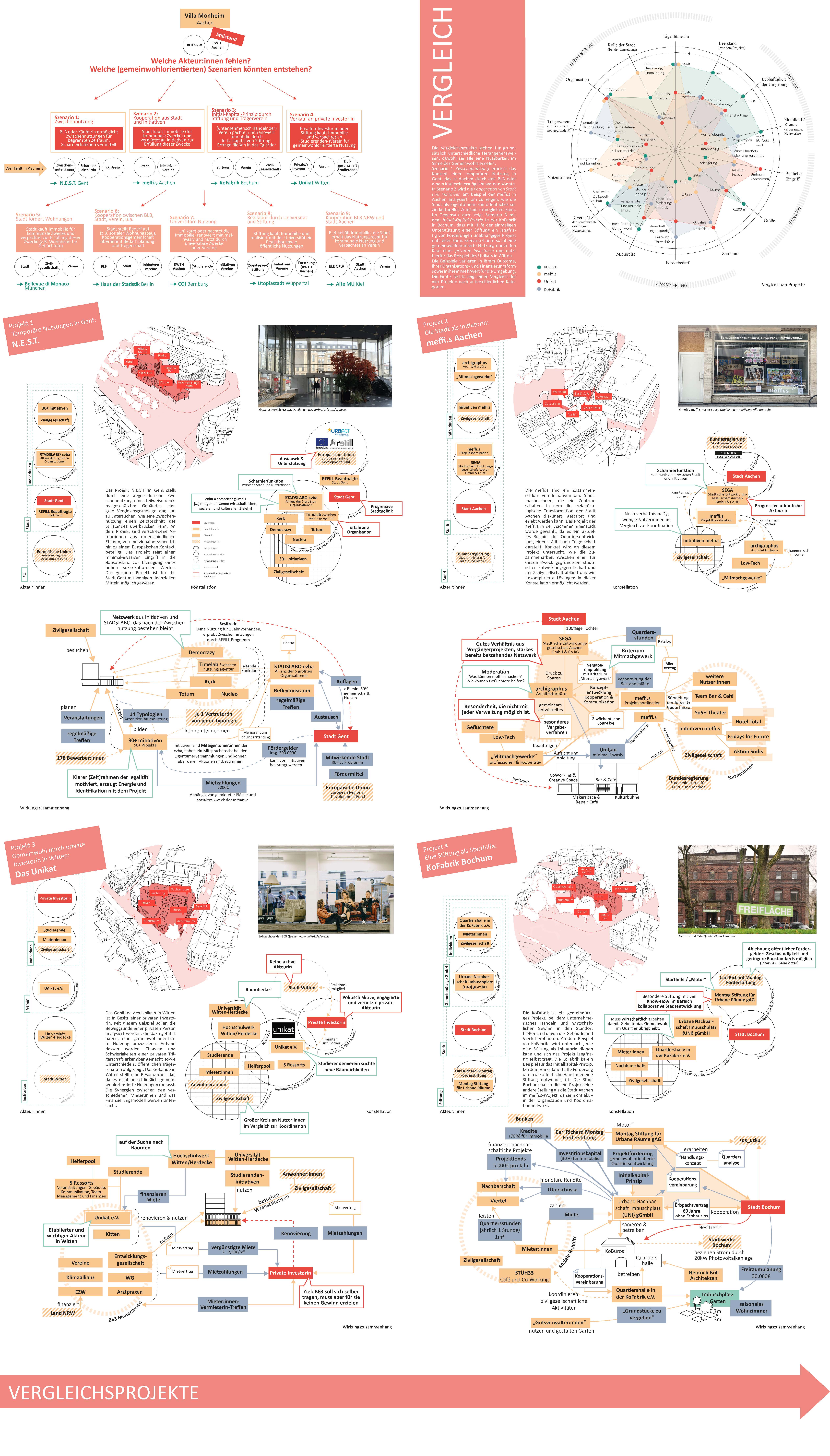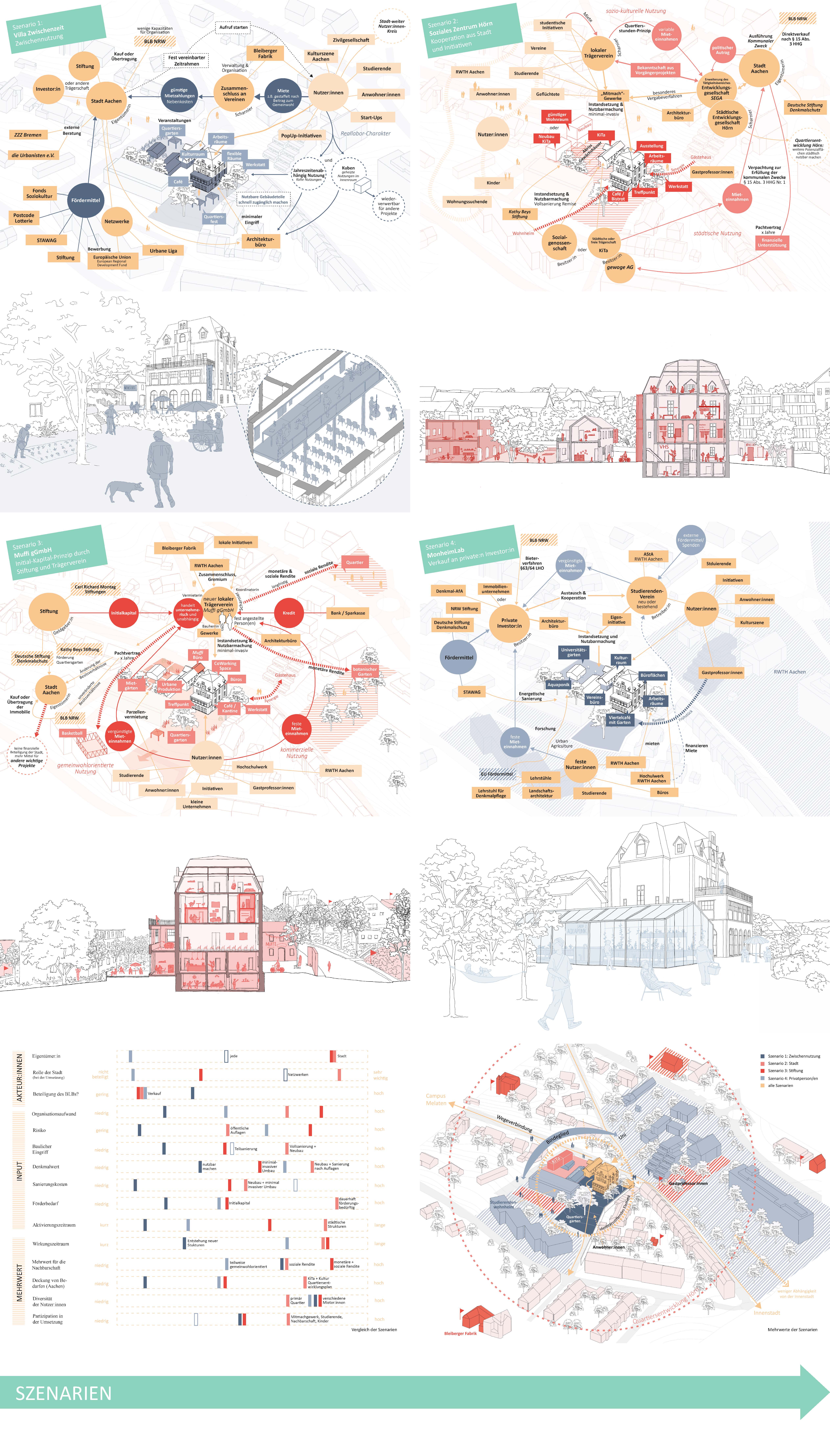Strategic toolbox for dealing with public vacancies based on the example of the Muffeter Weg in Aachen
Master’s thesis by Eva Hoppmanns
Supervised by:
Jun. Prof. Dr.-Ing. Jan Polívka
Nachhaltige Wohnbestandsentwicklung
Prof. Dipl.-Ing. Christa Reicher
Lehrstuhl für Städtebau und Entwerfen und
Institut für Städtebau und europäische Urbanistik
Thesis Abstract
In many cities in North Rhine-Westphalia, including Aachen, some public buildings owned by the state are vacant. In the context of increasing pressure on space and sustainable urban development, it is important to find a possible use for vacant properties. Especially in buildings that require special attention and are difficult to develop, the urgent needs for housing and public facilities in urban areas are not being realised. The property studied in this Master thesis, Villa Monheim at Muffeter Weg 5, represents such a case. The current ownership by a state-owned real estate company does not succeed in using this property for any purpose. However, the involvement and cooperation of new public, private and civil society actors in the process could make vacant buildings usable in the sense of a collaborative urban development.
Four good-practice examples from different cities show opportunities of utilisation. They enable the development of new welfare-oriented utilisation scenarios for the Villa Monheim through different approaches that vary in the actors involved and their roles in the overall concept. The work contributes to potential constellations that make vacant spaces usable through unconventional forms of cooperation between public and independent stakeholders. Possible pathsways of transformation strategies are shown in a toolbox for actors with public welfare-oriented intentions.



